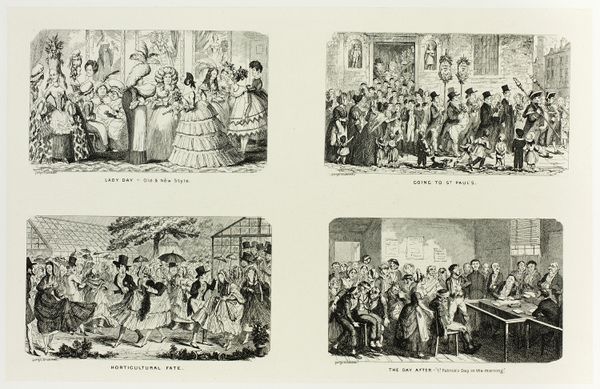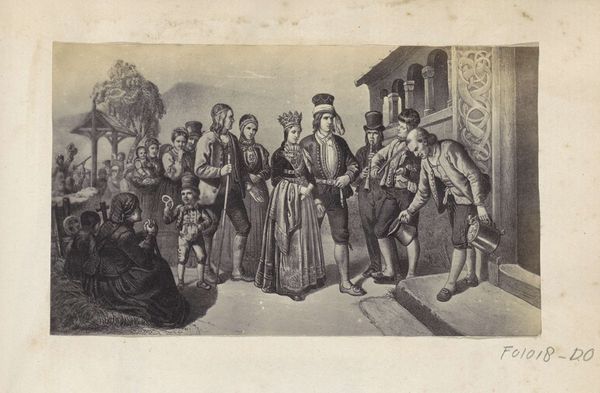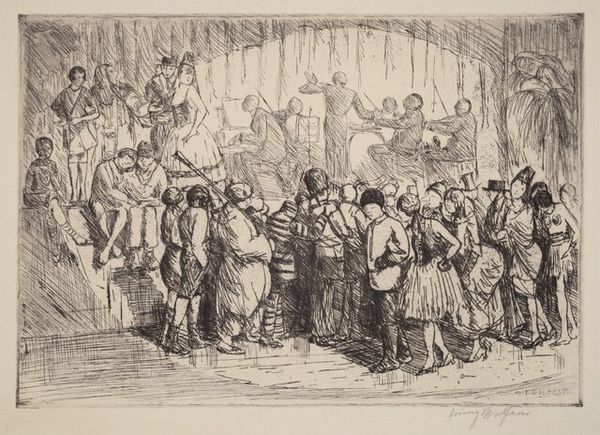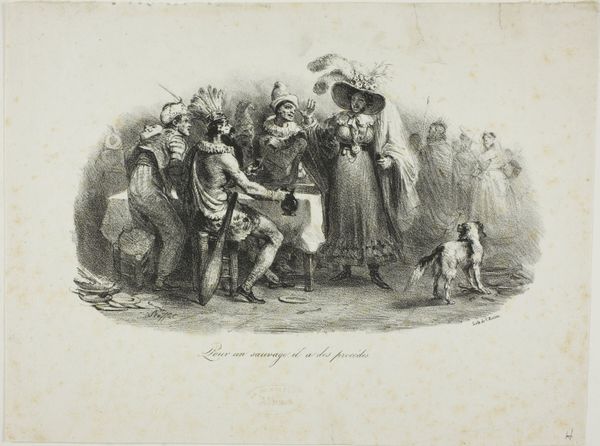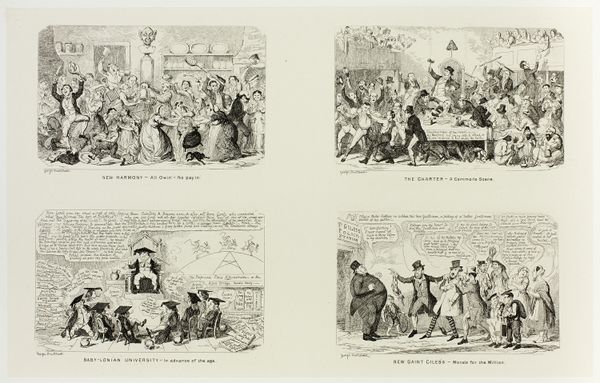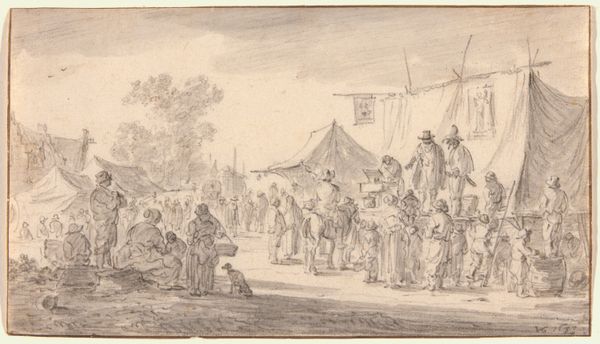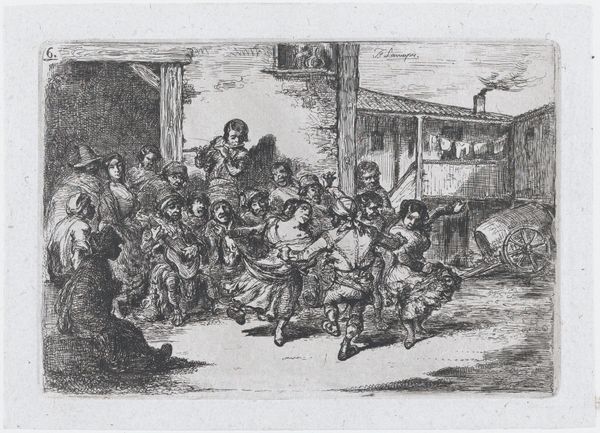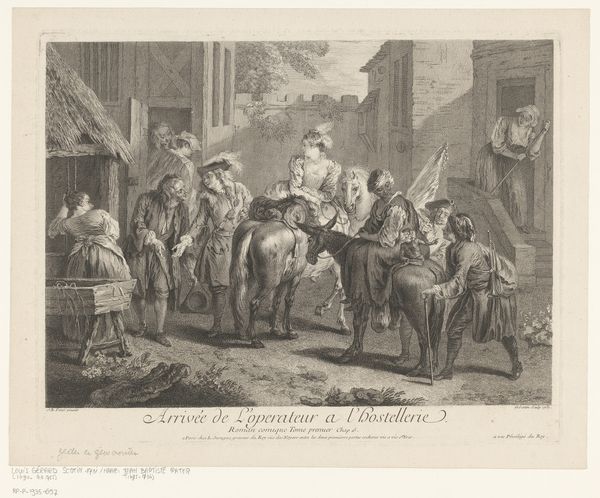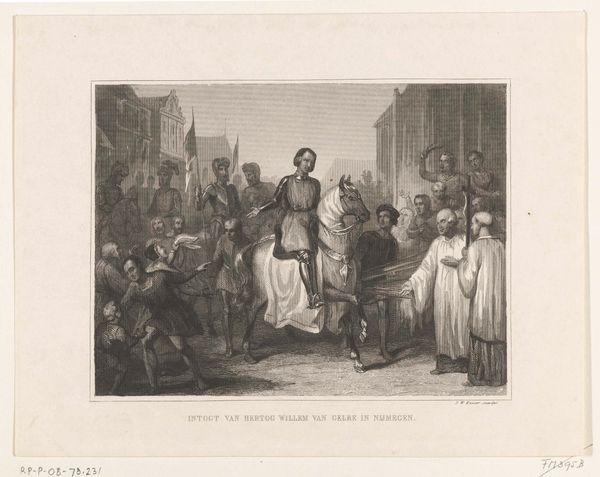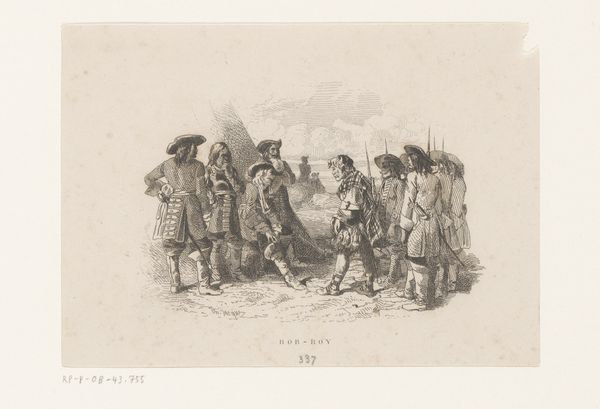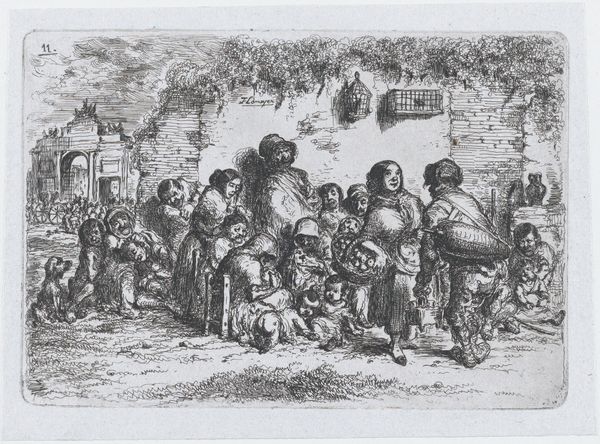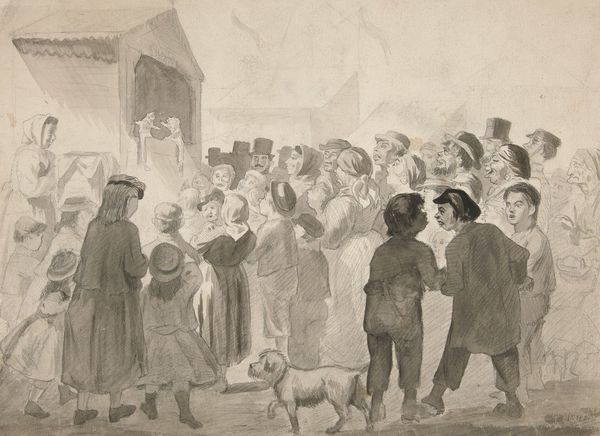
Probable Effects of Over Female Emigration, or Importing the Fair Sex from the Savage Islands in Consequence of Exporting All Our Own to Australia!!!!! from George Cruikshank's Steel Etchings to The Comic Almanacks: 1835-1853 c. 1851 - 1880
0:00
0:00
Dimensions: 162 × 412 mm (primary support); 251 × 502 mm (secondary support)
Copyright: Public Domain
This etching by George Cruikshank was made using steel, a relatively new material for printmaking at the time. Steel offered a harder surface than traditional copper, allowing for finer lines and larger print runs – perfect for the mass-produced Comic Almanacks. Look closely, and you’ll notice the incredible detail achieved through etching. The acidic process bites into the steel, creating deep grooves that hold ink. This technique allowed Cruikshank to capture a complex scene with sharp contrasts. The scene depicts the satirical and racist scenario of the consequences of over female emigration. Cruikshank's choice of steel, an industrial material, reflects the changing times. It speaks volumes about the rise of mass media and its potential to spread both information and, as we see here, deeply problematic social commentary. By focusing on the material and process, we can understand how this artwork participated in the social and political discourse of its time, challenging traditional distinctions between art and social critique.
Comments
No comments
Be the first to comment and join the conversation on the ultimate creative platform.
